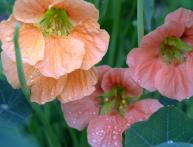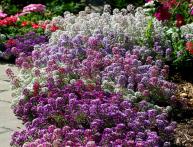Ampelous petunia: secrets of growing a plant
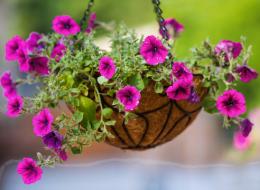
To create a cozy atmosphere in the house, decorate the terrace and vertical gardening, many gardeners use petunia.
You can see amazing views from the balconies and terraces petunias – ampelous. The trunk of the flower is strewn with numerous flowers.
This amazing plant can bloom for several months.
Content:
- Ampelous petunia: popular varieties
- Technology for growing petunia from seeds
- Cuttings as a method of propagating petunia
Ampelous petunia: popular varieties
There are many types of petunia, but the most common is petunia ampelous. This plant can be divided into 3 groups.
The first group includes petunias with long and strong shoots. Their length is 60-120 cm.
The second group consists of plants whose stems are directed upward and then creep. The third group includes petunias with short lashes.
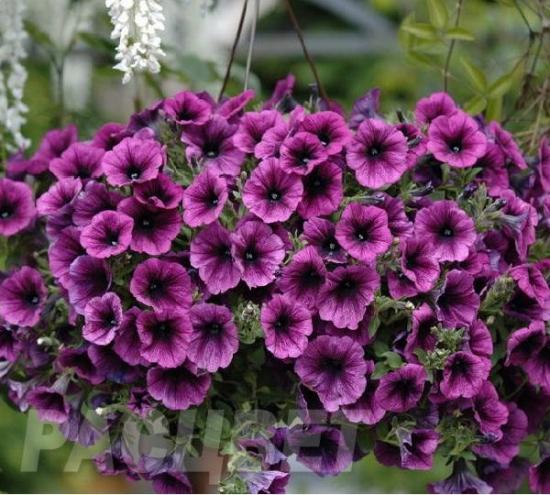
They are placed in balcony boxes, large flowerpots or hanging flowerpots. Among the numerous varieties of ampelous petunia, the most common are:
- Variety "Ekaterina". Is hybrid. The flowers of the plant have a rare and unusual color: it combines shades of yellow, orange and red. The size of the flowers in diameter is 5-6 cm.
- Variety "Snow Queen". Stems are medium length. Numerous white flowers. It has a subtle and pleasant aroma.
- Variety "Black Velvet". The color is unusual: the flowers are black with a velvety tint.The densely branched trunk reaches a height of up to 35 cm.
- Variety "Mashenka". The stems reach a length of about 80 cm. The leaves are small and arranged alternately. The flowers are bright pink, with a light yellow streak in the middle.
- Variety "Svetlana". Has long branched stems. The leaves are also arranged alternately. The wavy, pink-veined flowers resemble a funnel.
- Variety "Explorer". Unlike other species, it can reach a height of up to 1.5 m. The flowers of the plant are large and can have different colors.
- Variety "Neon roses". Large-flowered variety. The flowers are dark lilac. It can reach a height of up to 35 cm.
Technology for growing petunia from seeds
Planting material must be chosen of high quality, which is supplied by foreign manufacturers.
In the CIS countries, plant varieties and hybrids are not created. sow seeds petunias preferably in spring.
It all depends on the plant variety. After sowing, small-flowered varieties will bloom in 2.5 months, and large-flowered varieties - in 3 months.
The soil for sowing should be loose and nutritious, as well as well moistened. Before sowing, seeds must be soaked in a solution of potassium permanganate.
Video on how to propagate ampelous petunia:
The seedling container should have holes in the bottom to prevent excess water from accumulating in the soil.
To create artificial drainage, place a layer of expanded clay or pebbles on the bottom of the container. The thickness of the drainage layer should be about 2 cm.
Gently scatter the seeds over the surface and then cover with plastic wrap.
Ground There is no need to cover the seeds. Light activates and stimulates plant growth.For successful seed germination, the room temperature should be about 22-24 degrees.
Once a day, the film must be opened slightly for a few minutes to allow oxygen to enter.
Within a week the first shoots will appear. They need to be sprayed daily. After the seeds have sprouted, the temperature should be reduced.
As soon as the first leaves appear, the seedlings can be placed in pots. Pinching seedlings must be done after 4-5 leaves appear, and then after planting in the ground.
Humidity plays a huge role when growing seedlings. Young plants may die if the soil is dry, and if the soil is too wet, they may be affected by a fungal disease - blackleg. It is necessary to water petunia moderately and in a timely manner.
The seedlings develop slowly over several weeks. At this time, petunia is growing its root system. Gradually growth intensifies.
In order for the plant to take root well in the garden plot, it must be looked after care. Young shoots should be fed with special complex fertilizers once a month.
Cuttings as a method of propagating petunias
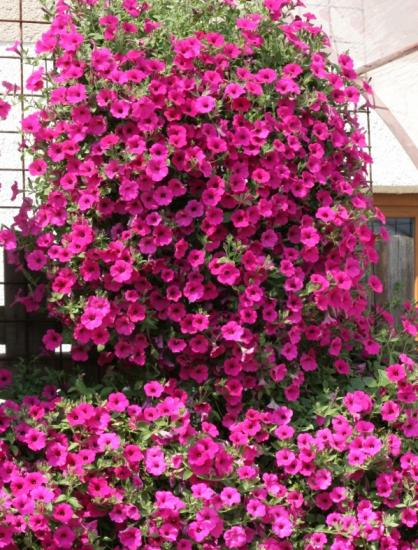
Petunia can be propagated and grown not only by seeds, but also by cuttings. This procedure is best performed in February-May.
Cut the cuttings located at the top of the petunia from a healthy plant at an angle. One shoot should have several leaves. Leave only the top leaves on the cut cuttings.
Planting must be done immediately after cutting the shoots. The distance between individual cuttings should be at least 2 cm.
Next, water the cuttings with water, place them in a warm room where the temperature is 21-24 degrees, and cover with film.
Petunia - This is a light-loving plant, so it should be grown in the light. After 7-10 days, the cuttings take root.
Once the roots of the petunia have sprouted, the plant can be transplanted into a separate container.
Any growing method has its advantages and disadvantages. Unlike planting seeds, when propagating petunia from cuttings, flowering will begin in 25-35 days.
With proper cultivation and care, ampelous petunia will bloom profusely and smell fragrant until the end of summer.
Interesting information about the vegetable garden



